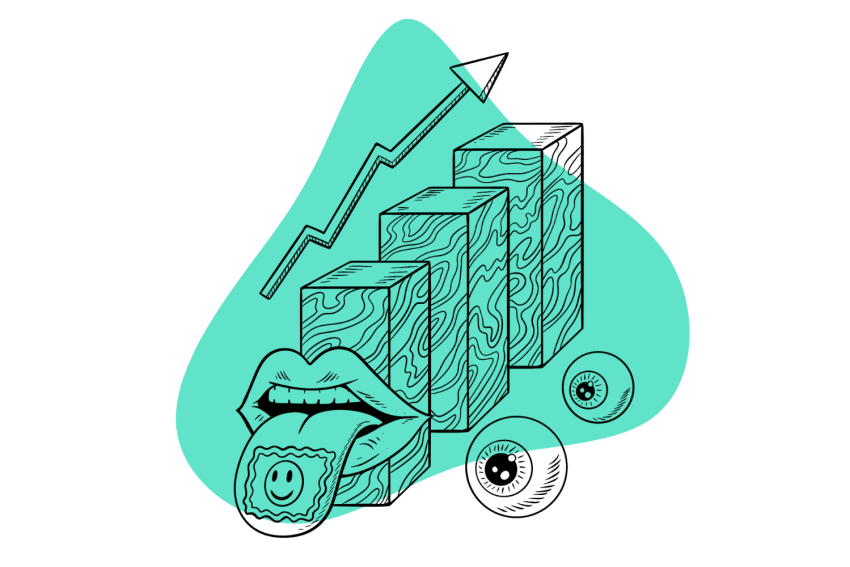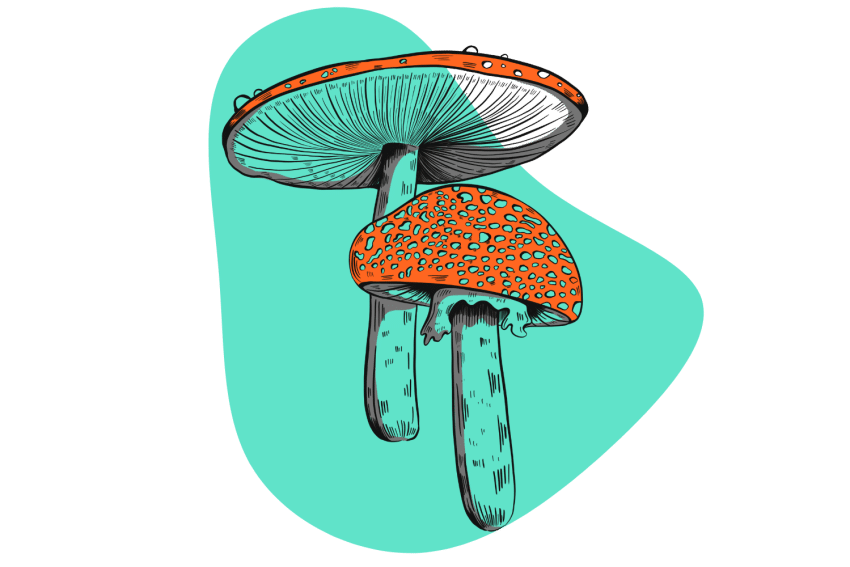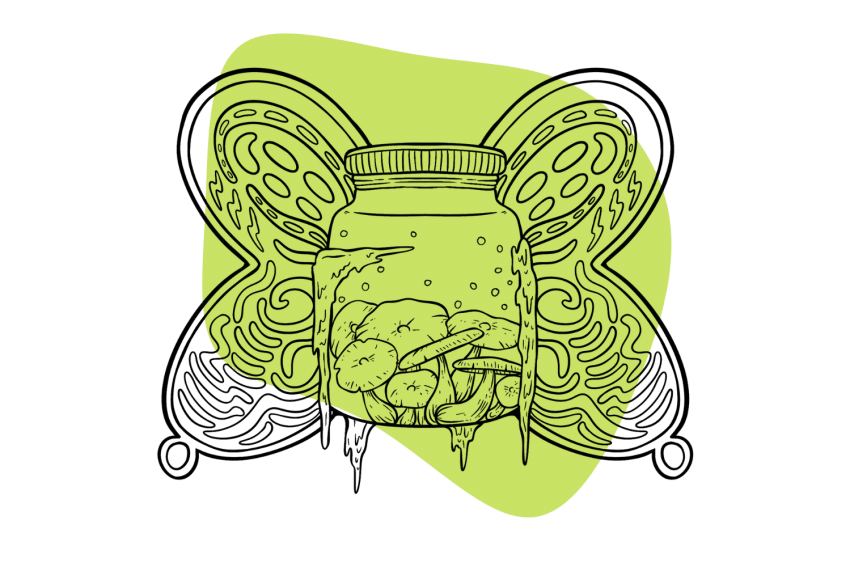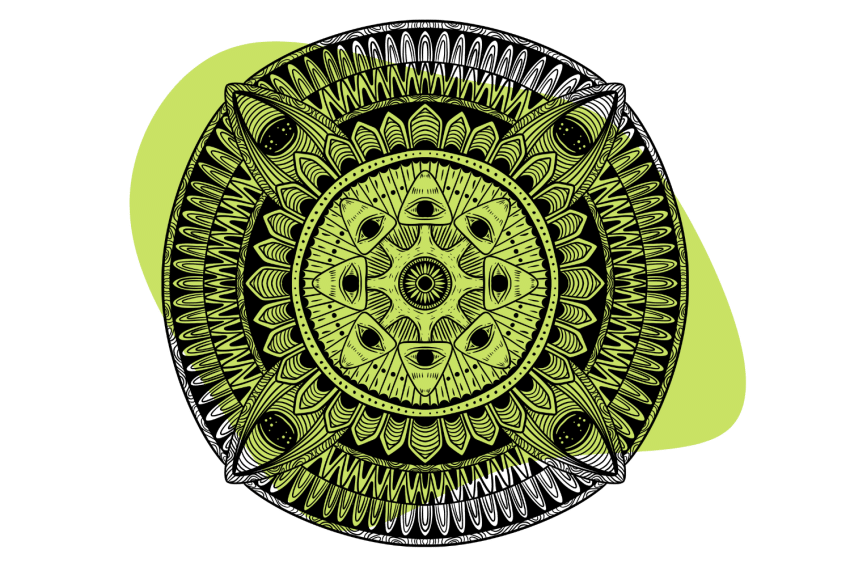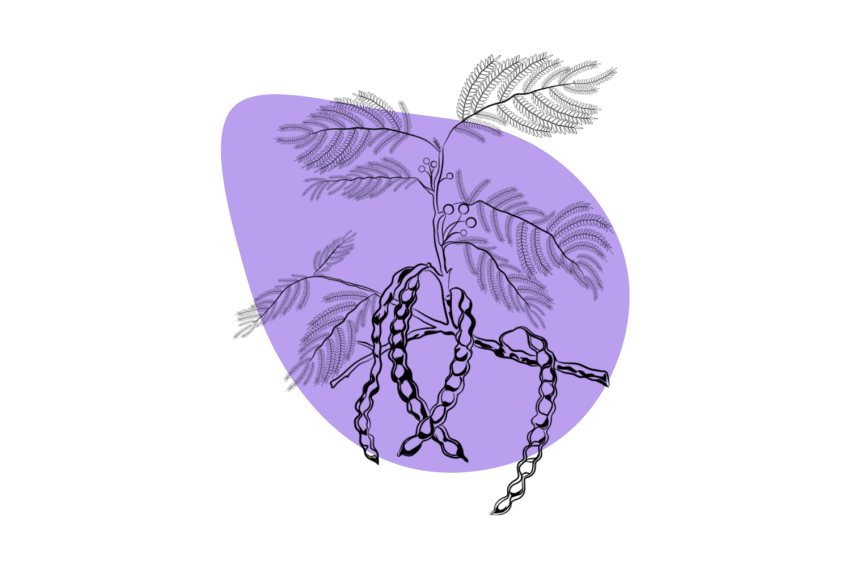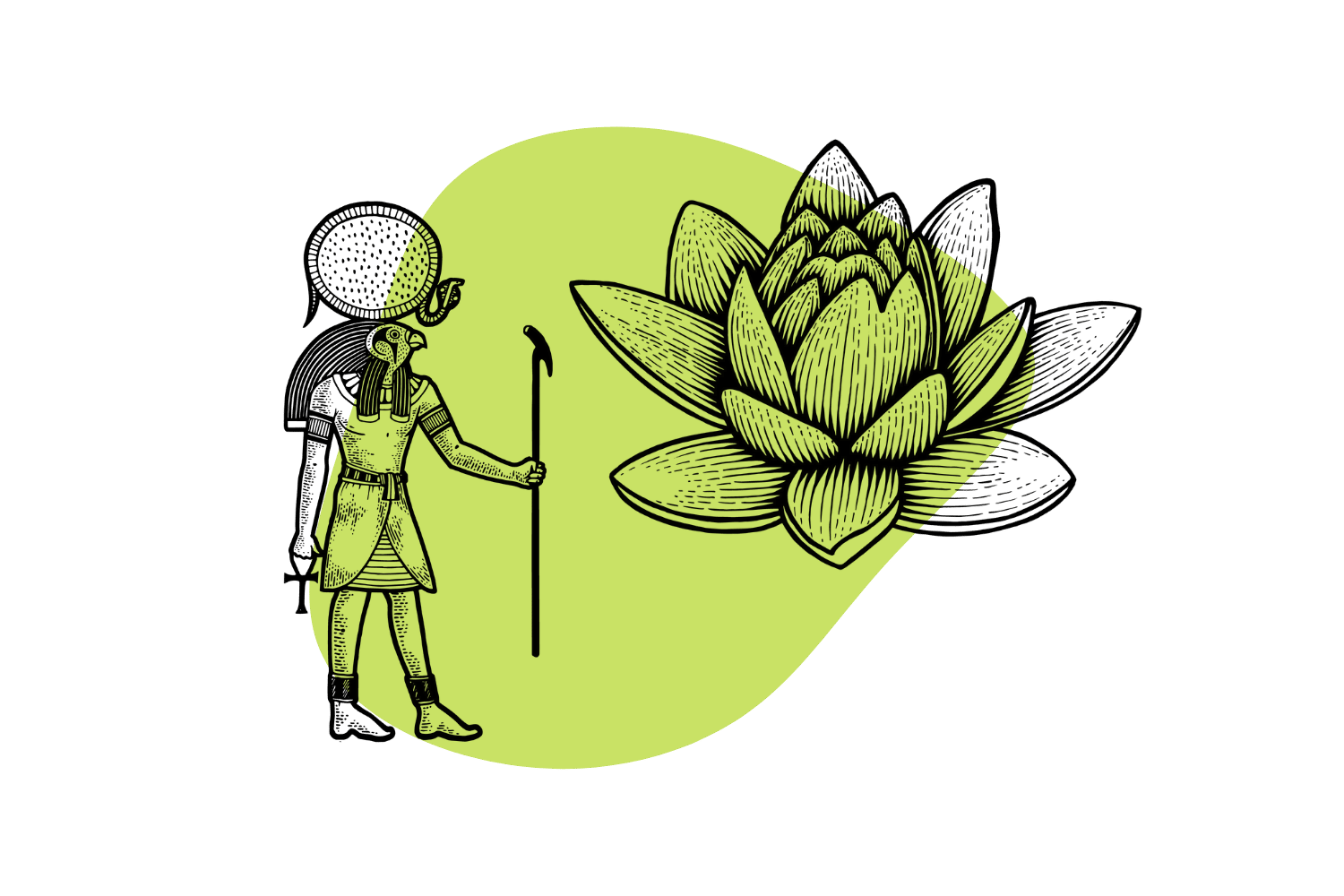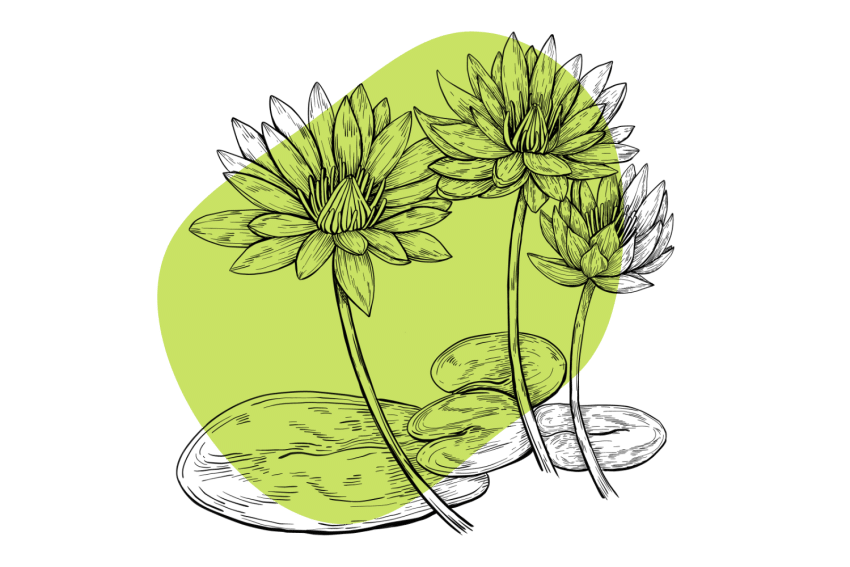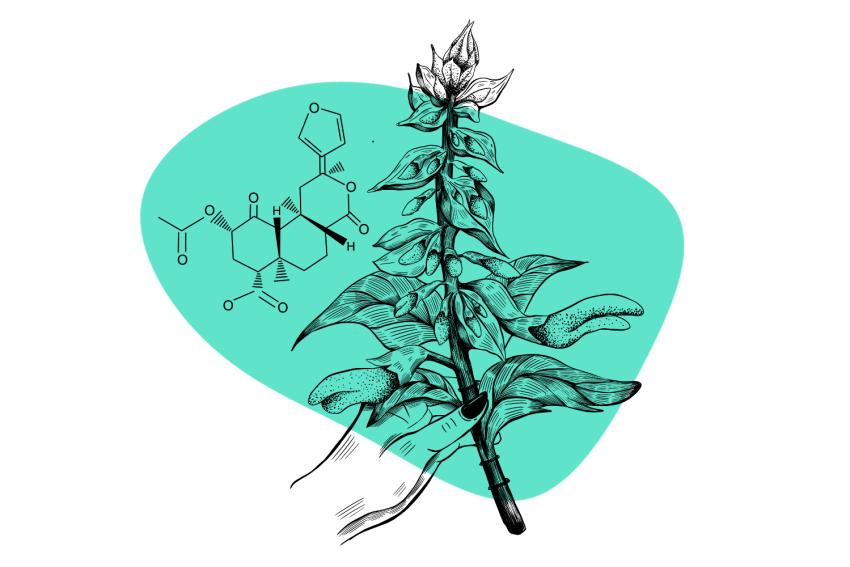Mescaline: Peyote, San Pedro, & Peruvian Torch Cactus
Explore what makes mescaline one of the most underrated psychedelics of all time.
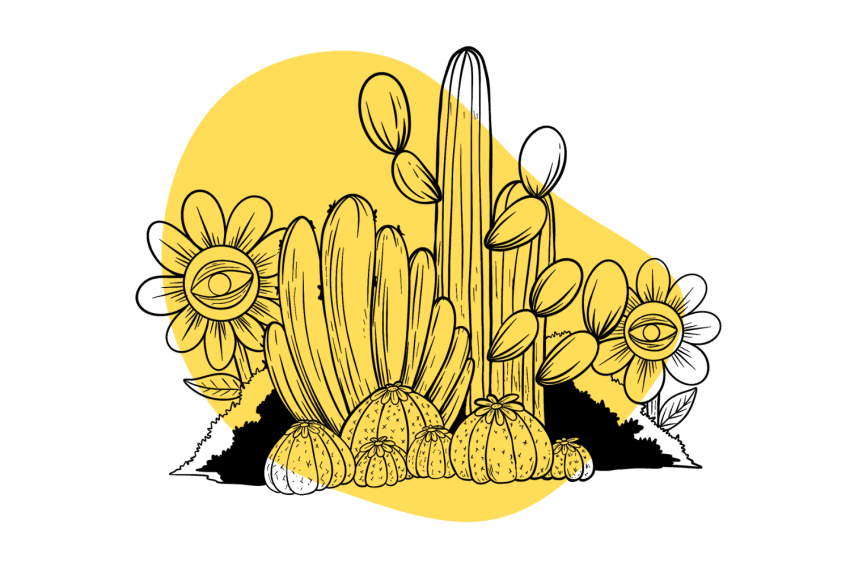
Mescaline is a highly underrated psychedelic.
The mescaline experience isn’t going to inject you into other dimensions like ayahuasca or DMT, and it’s unlikely to give you deep insights into the human condition — but it does have the tendency to show you that after all is said and done… life, in its essence, is good.
This interesting psychedelic has a lot of overlap with LSD and psilocybin — but is much more social. Instead of making you feel isolated and introverted, it brings a sense of confidence and extroversion.
Mescaline brings a sense of energy and euphoria, expands your sense of empathy with the world around you, and makes you want to talk with friends or go exploring.
Here, we’ll cover everything you need to know about mescaline and the three most prominent sources — peyote, San Pedro, and Peruvian torch cacti.
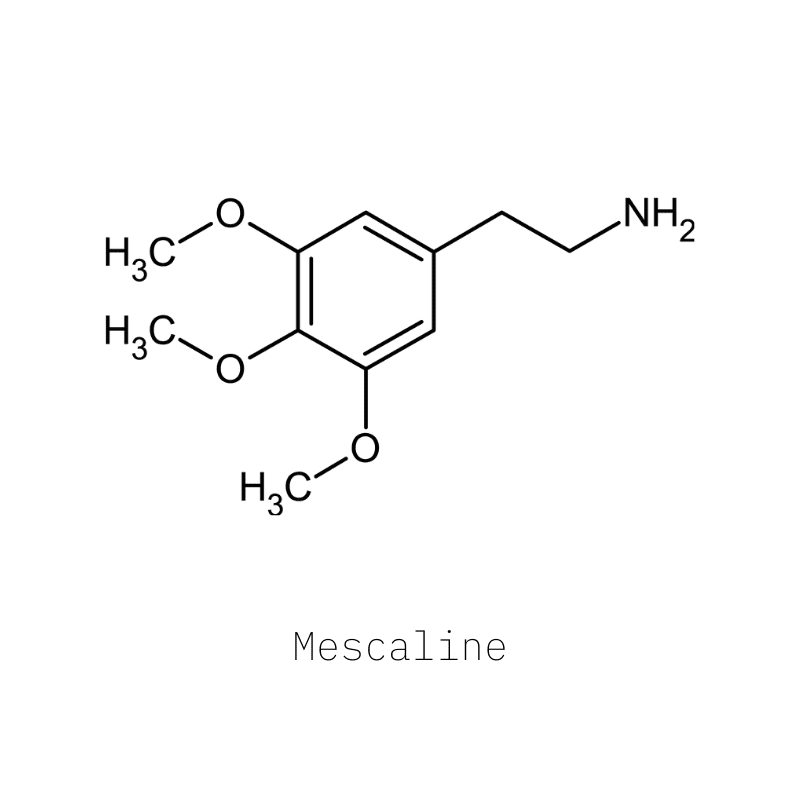
What is Mescaline?
Mescaline (3,4,5-trimethoxyphenethylamine) is a naturally occurring psychedelic found in several species of cacti — all of which are native to North America.
The effects of mescaline are very comparable to LSD or magic mushrooms but with some subtle differences. The main difference is the sociability aspect of mescaline — it tends to make people more confident, energetic, and talkative.
Despite having strong cartoon-esque visuals, the mind remains clear and composed.
Mescaline has a long history of use by Native Americans in the United States and Mexico as a form of sacrament. These groups have been granted religious access to mescaline-containing cacti under the 1994 American Indian Religious Freedom Act (AIRFA).
Aldous Huxley brought this substance to the mainstream public through his iconic book “The Doors of Perception” — which was based mainly on his experience with mescaline.
Mescaline is also being explored for potential applications in psychedelic-assisted psychotherapy.
Mescaline: Specs & Technical Details
| Level of Risk | Very low |
| Street Names | Buttons, cactus, peyote, San Pedro, Huachuma, Peruvian torch |
| Most Common Side-Effects | Stomach discomfort |
| Duration of Effects | 10 – 12 hours |
| Legality | Illegal (Religious Exceptions) |
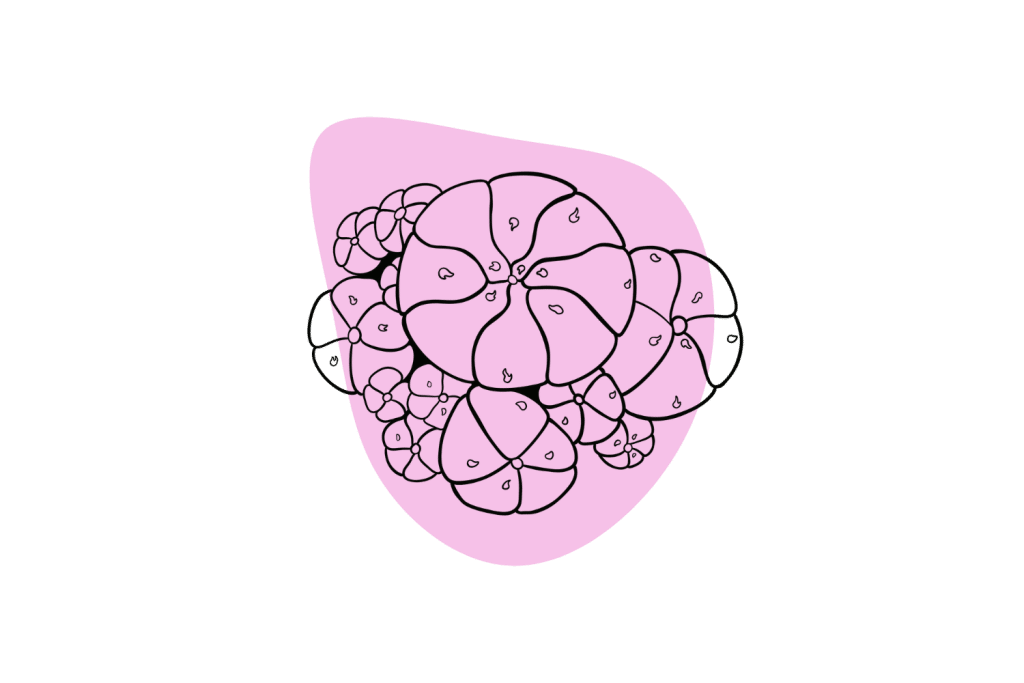
Peyote Cactus
(Lophophora williamsii)
Peyote is a species of cactus found in the Southern United States and Mexico. It’s a very unassuming cactus — it’s small, has no spines, and doesn’t grow much larger than a pin cushion. A single peyote cactus is often referred to as a “button”.
Despite its humble appearance, the peyote cactus contains the highest concentration of mescaline of any other cactus at around 3–6% of the dried weight.
Peyote grows exceptionally slow — taking up to 15 years to reach maturity. The average user requires several buttons of peyote cactus for a single dose. An experienced peyote user may take as many as 15 or 20 buttons at a time.
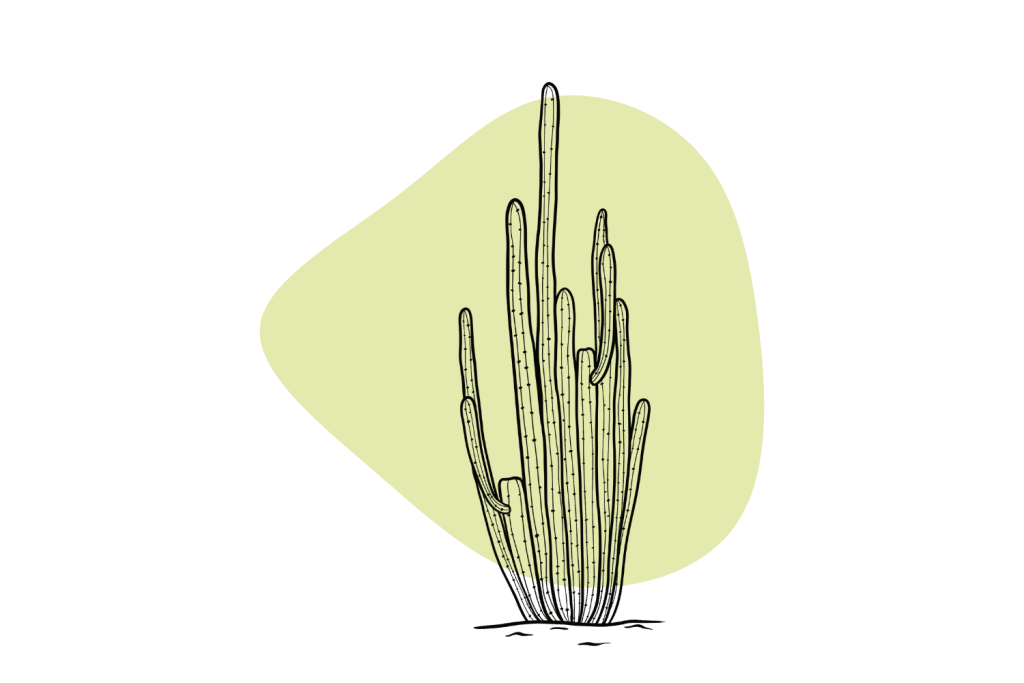
San Pedro Cactus
(Echinopsis pachanoi)
The San Pedro cactus (AKA Huachuma) is native to the mountainous regions of South America — found growing as high as 3000 meters in elevation in the Andes Mountains.
This psychoactive species of cacti is many times larger than peyote and offers a more sustainable source of mescaline as a result.
It contains a lower concentration of mescaline — at around 4.5% of the dried weight. But the dramatically larger size of the plant provides more mescaline overall.
San Pedro cactus can grow up to 12 meters (40 ft) tall.
Peruvian Torch
(Echinopsis peruviana)
This cactus is a close relative of the San Pedro cactus. It grows much faster than San Pedro and peyote but produces much lower mescaline content — just 0.24% of the dried weight.
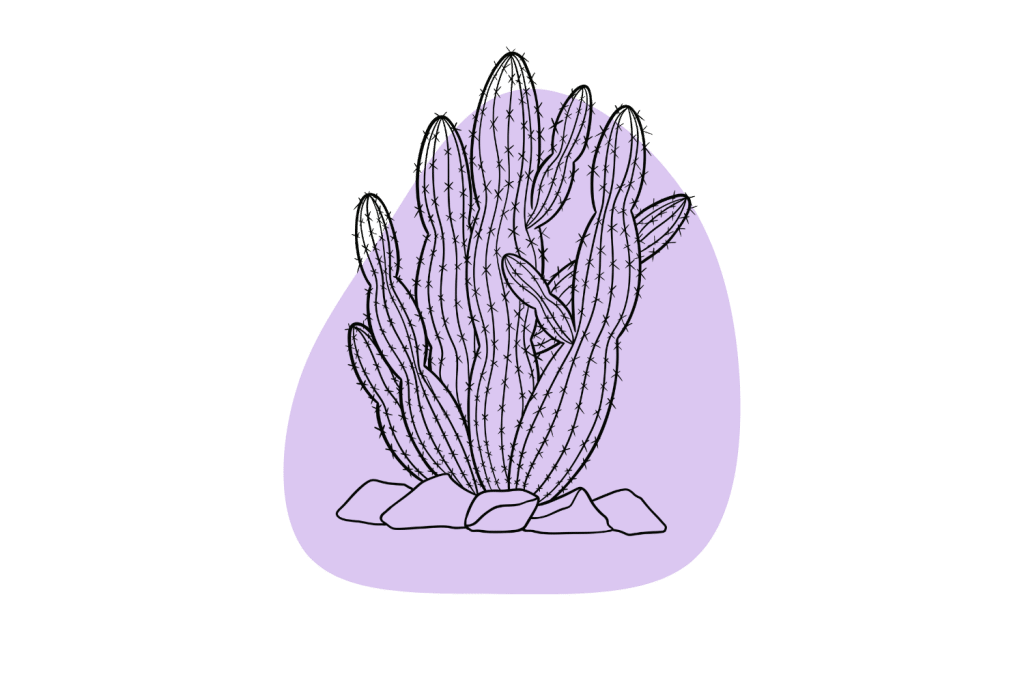
This means the dose of raw cactus is too high to use the Peruvian torch on its own. However, it does offer a more sustainable source of mescaline concentrate.
Other Sources of Mescaline
There are three pure forms of mescaline available — freebase mescaline, mescaline sulfate, and mescaline hydrochloride.
Mescaline was first synthesized in 1919 by Ernst Späth — a famous Austrian chemist who studied plant extracts. Of the 120 compounds Spath and his team discovered, mescaline was, by far, the most impactful.
In the 1960s and 70s, a man named Alexander Shulgin used mescaline as the starting point to make dozens of other psychoactive substances, including MDMA. He’s been dubbed “the grandfather of psychedelics” for his role in developing and documenting well over 200 psychoactive substances — many of which were derived from mescaline.
Shulgin published his work in two volumes — TIHKAL (tryptamine-based psychoactive based on psilocybin and LSD) and PIHKAL (phenethylamine-based psychoactive based on mescaline).
List of Mescaline-Inspired Psychoactive Substances
- 3C-E
- 3C-P
- 3C-DFE
- 3C-BZ
- 4-Desoxy Mescaline
- AEM (α-ethylmescaline)
- Allylescaline
- Ariadne (α-Et-DOM)
- Bis-TOM
- BOH
- BOM (β-Methoxy-mescaline)
- Buscaline
- Cyclopropylmescaline
- DME
- Escaline
- F-2
- F-22
- FLEA (MDHMA)
- Isomescaline
- Isoproscaline
- Jimscaline
- Lophophine
- Macromerine
- MDMA
- MDMP
- MDPH
- MEPEA
- Metaescaline
- Metaproscaline
- Methallylescaline
- Phenescaline
- Propynyl
- Proscaline
- Symbescaline
- Thiobuscaline
- Thioisomescaline — 2-TIM, 3-TIM, and 4-TIM
- Thiometaescaline — 3-TME, 4-TME, and 5-TME
- Thioproscaline
- Thiosymbescaline — 3-TSB and 4-TSB
- Thiotrisescaline — 3-T-TRIS and 4-T-TRIS
- TOET — 2-TOET and 5-TOET
- TOM — 2-TOM and 5-TOM
- TOMSO — 2-methoxy-4-methyl-5-methylsulfinylamphetamine
- Trisescaline
What’s The Dose of Mescaline?
| Source | Microdose | Standard Psychoactive Dose |
| Peyote | 1 gram | 5–15 grams |
| San Pedro (Huachuma) | 1-2 grams | 8–20 grams |
| Peruvian Torch | 5–10 grams | 30 – 50 grams |
| Pure Mescaline | 10–40 milligrams | 200 milligrams |
1. Microdoses
Microdosing involves using sub-psychoactive doses of a substance. This dose doesn’t make you feel high, but it still has a subtle impact on cognition.
The suggested benefits of microdosing mescaline include:
- More creativity
- Improvements in memory & relational skills
- Better focus & concentration
- More mental & physical energy
- Improvements in mood
- A higher level of empathy toward others
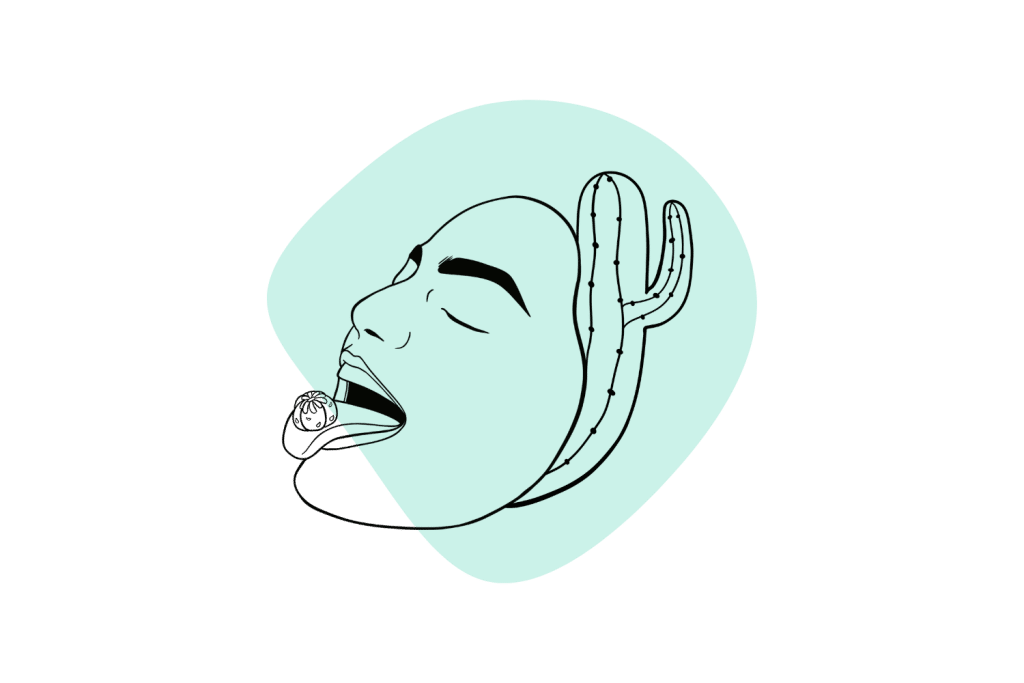
The idea of microdosing is to take these low doses regularly over several weeks or months. The improvements from microdosing happen gradually over time. The longer you take the mescaline, the greater the improvement (in theory, at least). There have not been any official studies to explore the long-term benefits of microdosing mescaline.
Mescaline can be stimulating, even in low doses, so it’s recommended that you take your dose in the morning. This will ensure it has enough time to wear off by the time you’re ready to go to bed.
There are a few different philosophies regarding schedules, but the most common is to take one dose of mescaline every three days (2 days break).
How much do I take for a microdose of mescaline?
- Pure mescaline isolate — 10–40 milligrams
- Peyote cactus (dried) — 1 gram
- San Pedro cactus (dried) — 1–2 grams
- Peruvian torch cactus (dried) — 5–15 grams
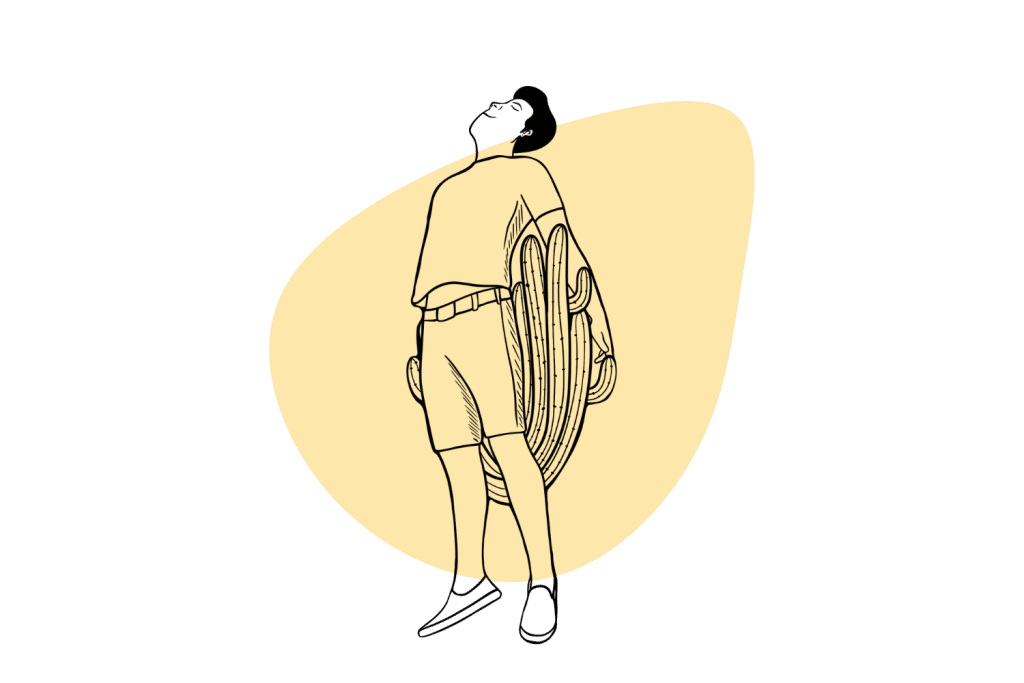
2. Standard Psychoactive Dose
The standard psychoactive dose of mescaline is between 200 to 400 milligrams.
At this dose, you’ll experience the full psychoactive effect of mescaline. This includes visual and auditory hallucinations, changes in the perception of time, inhibition of the default mode network (DMN), and an expanded sense of empathy and openness.
This dose is well within the safe range of using mescaline and is unlikely to lead to any serious side effects. Reaching this dose with dried cactus requires several grams at a time, which can irritate the stomach. The most common side effect of psychoactive mescaline is stomach discomfort, caused by the cactus itself rather than the mescaline.
You can avoid this side effect by drinking ginger tea before taking the cactus.
What Does A Mescaline Trip Feel Like?
The effects of mescaline are similar to LSD and magic mushrooms but with some differences.
Mescaline is a social psychedelic — which means it’s much more likely to make you feel conversational, confident, and energized.
In comparison, magic mushrooms are introverted psychedelics. They encourage users to go off to be alone.
LSD is somewhere in the middle, sometimes making users more social — other times, more introverted.
People who’ve used mescaline often describe it as creating almost cartoon-like hallucinations while maintaining complete mental clarity. You can have a perfectly normal conversation under the effects of mescaline, and the entire trip remains based on reality (as opposed to ayahuasca, DMT, or salvia).
Mescaline won’t make you see something that isn’t there — it just makes the objects there look different.
Common Experiences From Mescaline Include:
- A desire to be with friends & family
- A feeling of content
- A feeling of empathy with the world around you
- Cartoon-like hallucinations
- Distorted perception of time
- Increased energy levels
- Paranoia or anxiety
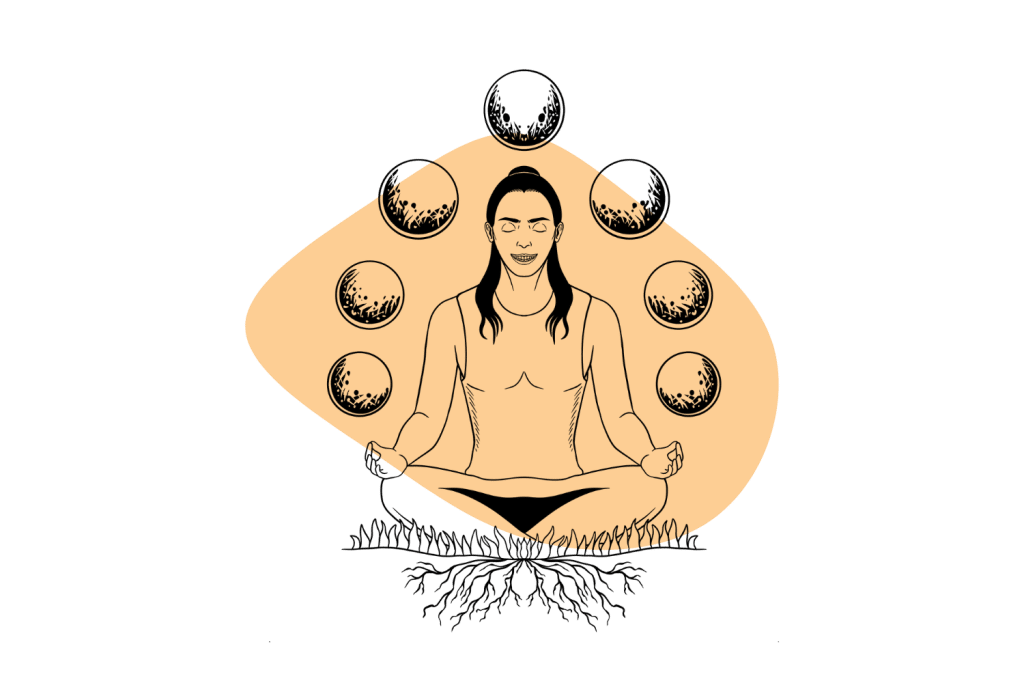
How Strong is Mescaline vs. Other Psychedelics?
Mescaline is the weakest of classical psychedelics. You need around 200 milligrams of mescaline to achieve a standard psychedelic dose.
Compare this to LSD (60 micrograms), psilocybin (10 milligrams), DMT (20 milligrams), or salvinorin A (200 micrograms).
The effects of mescaline are also much milder than other psychedelics. You’re not going to meet any aliens or experience separation from ego while using mescaline.
Mescaline vs. LSD & Shrooms
Mescaline is most comparable to LSD (lysergic acid diethylamide) and shrooms (psilocybin). It has a lot of similarities in terms of the visuals brought on by these substances.
The potency of these psychedelics is very different — with mescaline being the weakest overall. Psilocybin is roughly ten times as strong as mescaline, and LSD is around 1000 times as strong.
It’s also common to see familiar shapes and patterns in different textures such as dirt, sand, wallpaper, or other patterns. Much like finding shapes in the clouds, you may see what appear to be faces, animals, or letters appearing on objects in your environment.
The main differentiator with mescaline is that it’s considered a social psychedelic. Some even consider it a party drug. While it’s not the type of substance you’d take for a night out at the club, it’s popular in a group setting on a camping trip or bonfire. It promotes a feeling of self-confidence and extroversion. Mescaline makes you want to talk to people — as opposed to magic mushrooms that tend to have the opposite effect, promoting you to separate from the group to be alone with your thoughts.
Mescaline vs. DMT
Mescaline and DMT (N,N-dimethyltryptamine) are very different. DMT has a very strong dissociative effect — leading to a dissolution of our sense of “self” or ego.
Even small doses of DMT are powerfully psychoactive and can warp our interpretation of the world around us.
Mescaline doesn’t do this. You remain completely “in the real world.”
The visuals from DMT are also much more geometric than the more fluid visuals experienced by mescaline. Of course, there are exceptions to this, and some people report geometric visuals on mescaline.
Mescaline vs. Ketamine
There’s some overlap in the effects of ketamine and mescaline. Both substances are phenethylamine-based psychedelics. This means both of these substances have a similar molecular structure, and therefore use similar mechanisms to produce their psychoactive effects.
Many other phenethylamine psychedelics share this effect, including DXM, PCP, 2C-B, 2C-E, and MDMA.
While the mechanism of action is similar, mescaline and ketamine have very different effects.
Ketamine and most of the other synthetic phenethylamine drugs have a strong dissociative effect — which is something not commonly experienced while under the effects of mescaline.
How to Take Mescaline
There are two primary forms of mescaline; raw cactus and pure synthetic mescaline powder.
Raw cactus is preferred and tends to produce a smoother experience — however, you need to consume a lot of cactus to reach the psychoactive dose. Eating a lot of cacti can be tricky — it tastes horrible and can cause severe stomach discomfort.
The synthetic powder requires a much smaller dose and is easily mixed into juice or water to mask the taste. You can also take mescaline powder as a capsule (the most common method).
1. The “Toss & Wash” Method
This is the most common method used for eating raw mescaline cactus. I’m not going to lie to you — it’s not going to be enjoyable. It’s going to be bitter — and there’s going to be a lot of it. The best way to do it is to rip it off like a bandaid and get it over with quickly rather than drawing it out.
To do the toss and wash method, add the desired dose of peyote, San Pedro, or Peruvian torch to a glass of water. Allow the powder or small cacti chunks to soak up some water before knocking it back. Keep some juice nearby to help wash it down. Pineapple juice works great for hiding the flavor
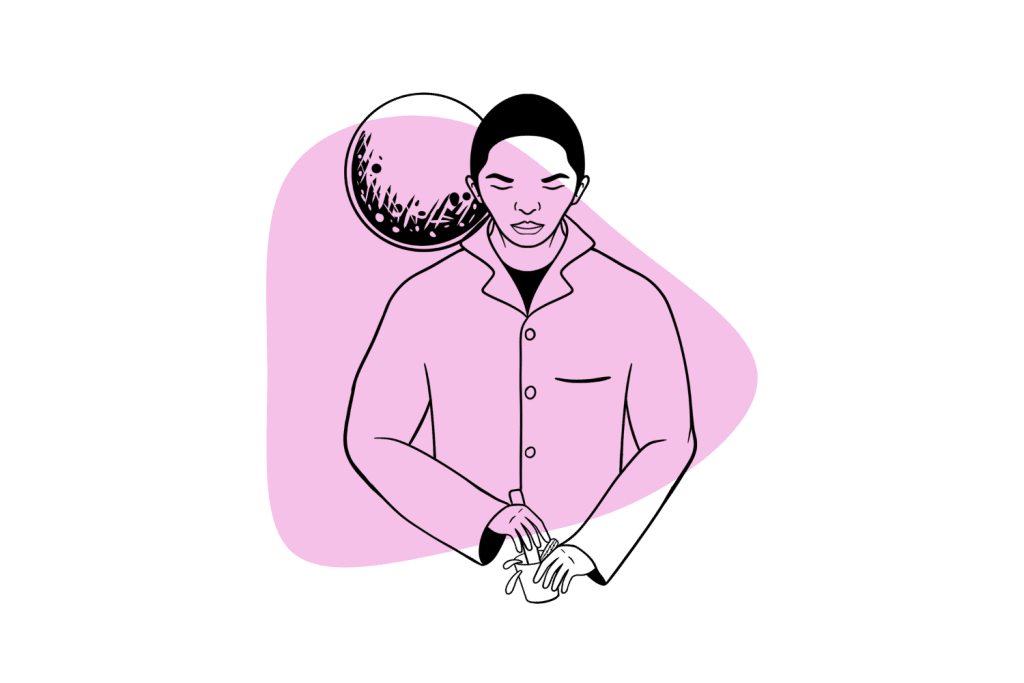
2. Capsules
Capsules are the most common form of using mescaline — but it only works with concentrated or synthetic mescaline. The raw cactus requires far too much to reasonably take in capsule form. You’d need to swallow 20 or 30 capsules just to hit the psychoactive dose.
Make sure you know how much mescaline is included in each capsule, and test a sample before you start. The most dangerous part of using synthetic mescaline isn’t the mescaline itself — it’s the risk of accidentally consuming capsules that have been adulterated with other, more harmful substances, such as NBOMe.
3. Smoked
This is a more traditional method of using mescaline that’s rarely practiced today.
Dried peyote or San Pedro cactus are ground up and mixed with tobacco. This can then be smoked for a mild psychoactive effect.
Traditionally, tobacco is considered a useful “teacher” plant. It’s often combined with psychedelics during ceremonial use to help guide the user through their trip safely.
Unfortunately, a lot of the mescaline is destroyed during the combustion process, so this is not an efficient way of using it.
4. Mescaline Tea
Tea can also be made from raw peyote or San Pedro cactus. To make tea, add a few pieces of cacti to a pot of water and gently boil it for about 10 minutes.
The heat may damage a lot of the mescaline prepared this way, so it’s not going to be as efficient as eating the raw powder directly (toss and wash method) — but it makes it much easier to consume.
You can also add other herbs to the tea to help with digestive side effects — such as ginger or peppermint.
How Does Mescaline Work?
Mescaline binds to several different types of receptors in the human brain to produce its effects.
Most of the psychoactive effect comes from its ability to activate the 5-HT2A and 5-HT2C serotonin receptors — which is the same mechanism of action used by other psychedelics, including DMT, LSD, and psilocin.
Receptors affected by mescaline include [6, 7]:
- Inhibits the alpha-1 adrenergic receptors
- Stimulates the 5-HT1A serotonin receptors
- Stimulates the 5-HT2A serotonin receptors
- Stimulates the 5-HT2C serotonin receptors
- Stimulates the TAAR1 receptors
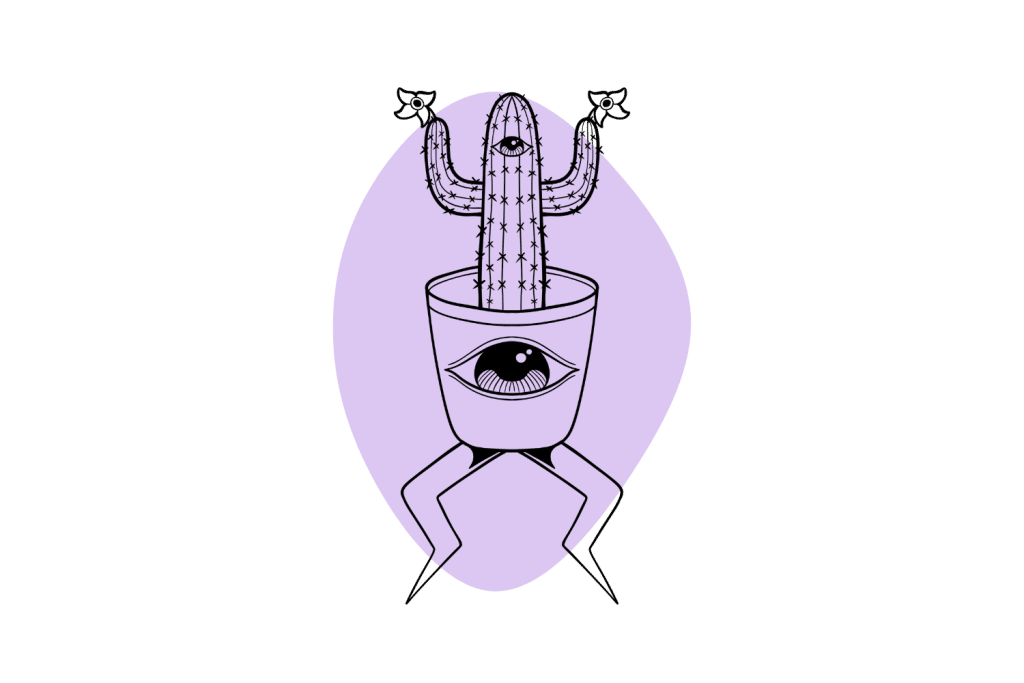
Is Mescaline Safe?
Mescaline poses little risk to the body. While there are side effects, there have never been any reported deaths caused by mescaline directly.
The LD50 of mescaline in humans is reported to be approximately 880 mg/kg [5].
That’s an extremely high dose. The average-sized human (140 lbs) would need nearly 60,000 milligrams of mescaline. This is about 300 times the standard psychoactive dose.
A 12-year review of the California Poison Control Database only found 31 cases of mescaline poisoning from 1997 to 2008 [1]. Of these 31 cases, none were lethal or produced any life-threatening side effects. It’s even a bit debatable that some of them could even be considered “poisoning.”
For example, vomiting was only reported in one patient. The most common side-effect was agitation and tachycardia (rapid heart rate).
Psychologically, there are some other risks to using mescaline. The potential to lead to ego death, and side effects like paranoia and anxiety could cause other mental health effects.
However, this is just in theory — several studies have already published that psychedelics, including mescaline, have a very low risk of causing mental health disorders even after a “bad trip” [2].
In fact, this study cited above found a lower incidence of mental health disorders in people who have used psychedelics.
Nevertheless, it’s important to follow the responsible use of psychedelics guidelines when using any psychoactive substances.
The intention you have going into the experience plays a major role in whether the substance will be helpful or harmful.
Side Effects of Mescaline
- Agitation
- Anxiety
- Insomnia
- Nausea or vomiting (rare)
- Paranoia
- Tachycardia (rapid heart rate)
Is Mescaline Addictive?
If you search “mescaline addiction,” — you’ll find a variety of rehab centers highlighting the addictive nature of psychoactive cacti — but there’s zero evidence to support this idea.
The fact is that, like most classical psychedelics (LSD, magic mushrooms, DMT), mescaline is not addictive. Surveys exploring the illicit use of peyote report the average “illicit” user of psychoactive cacti uses the drug an average of two times per lifetime [3] — which is a far cry from being a “drug of abuse.”
On the contrary, mescaline has been shown to offer powerful anti-addictive properties [4]. It’s one of the best candidates currently being explored as a solution to the widespread drug addiction epidemic. It stands tall among such psychedelics as ayahuasca, psilocybin, and LSD as potential treatments for addiction.
When To Avoid Mescaline
Mescaline isn’t safe for everybody. If you or a close family member have been diagnosed with psychiatric disorders like schizophrenia or psychosis, it may not be safe to use mescaline (or any psychedelics).
Mescaline is also not recommended for anybody with gut sensitivities — as the cactus already tends to irritate the digestive tract.
People using antidepressants, anti-anxiety medications, blood pressure medications, heart medications, or statin drugs should also avoid mescaline.
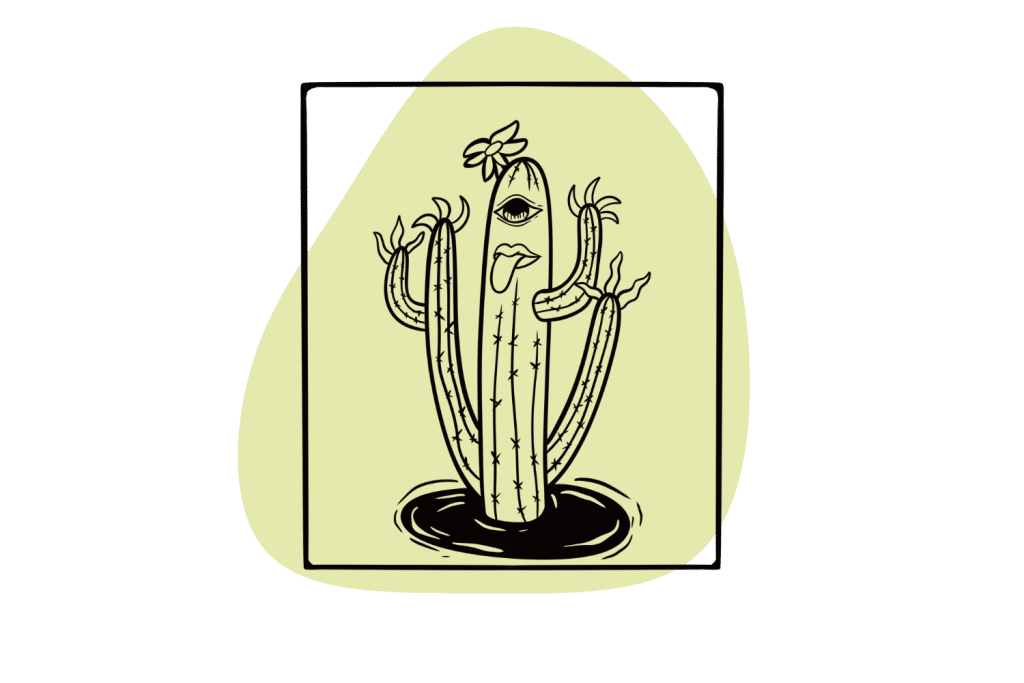
Is Mescaline Legal?
Mescaline and the cacti that produce it are illegal in most parts of the world, with a few exceptions.
In Canada, Germany, and New Zealand, psychoactive cacti are all legal to own as an ornamental plants. Mescaline and prepared psychoactive cacti remain illegal.
In the United States, peyote and San Pedro are permitted for religious uses by Native Americans. Some parts of the US have recently moved to decriminalize natural psychedelics.
In the United Kingdom, Ukraine, and Thailand, psychoactive cacti have been excluded from the banned substances list.
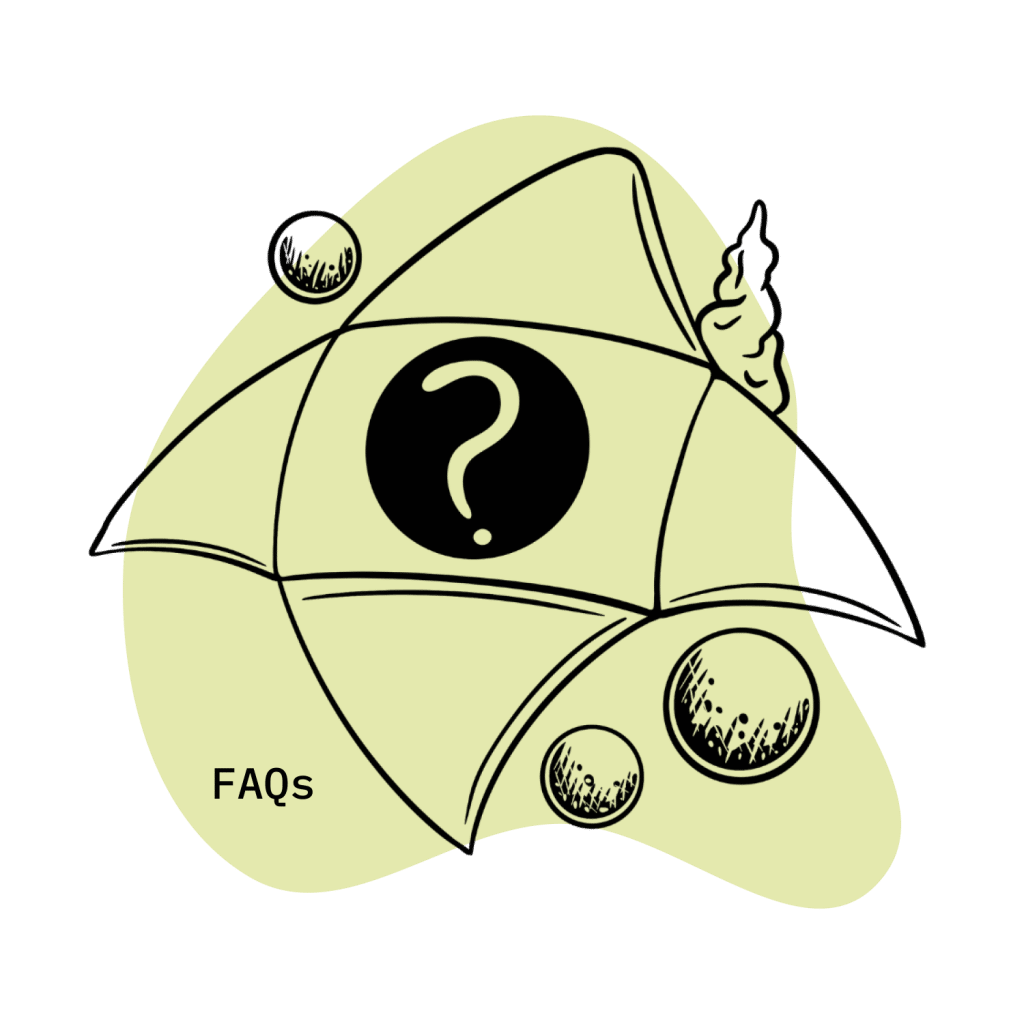
Mescaline: Frequently Asked Questions
1. How Long Does Mescaline Stay In The Body?
Mescaline can be detected in urine for up to three days but may remain detectable in hair samples for up to 90 days. Blood tests can only detect mescaline within 24 hours of use and saliva for up to 10 days (but usually less than 3).
2. Can I Order Live Peyote or San Pedro Cactus?
It’s legal to order peyote, San Pedro, and Peruvian torch cacti as decorative plants in some countries — including the US, Canada, Germany, Ukraine, and New Zealand.
You can sometimes find these cacti in nurseries in the US — but they won’t be labeled San Pedro. You can identify them by the tiny spines along a few verticals and the pattern on the smooth columns.
These cacti grow relatively quickly (for a cactus). It can take several months for the seeds to sprout, but most growers propagate new plants from cuttings instead — which grow into large plants in just a few years.
Expect to pay upwards of $50 per plant. It will then take 2–5 years for them to grow large enough to harvest (> 4 feet). Usually, San Pedro will max out around 7 feet in height before being knocked over under their weight. Cut and propagate some for new plants, and dry the rest.
3. Is Mescaline & Mezcal the Same Thing?
Mescaline is sometimes confused with the alcoholic spirit, mezcal. The names of these two products are similar, but they couldn’t be more different.
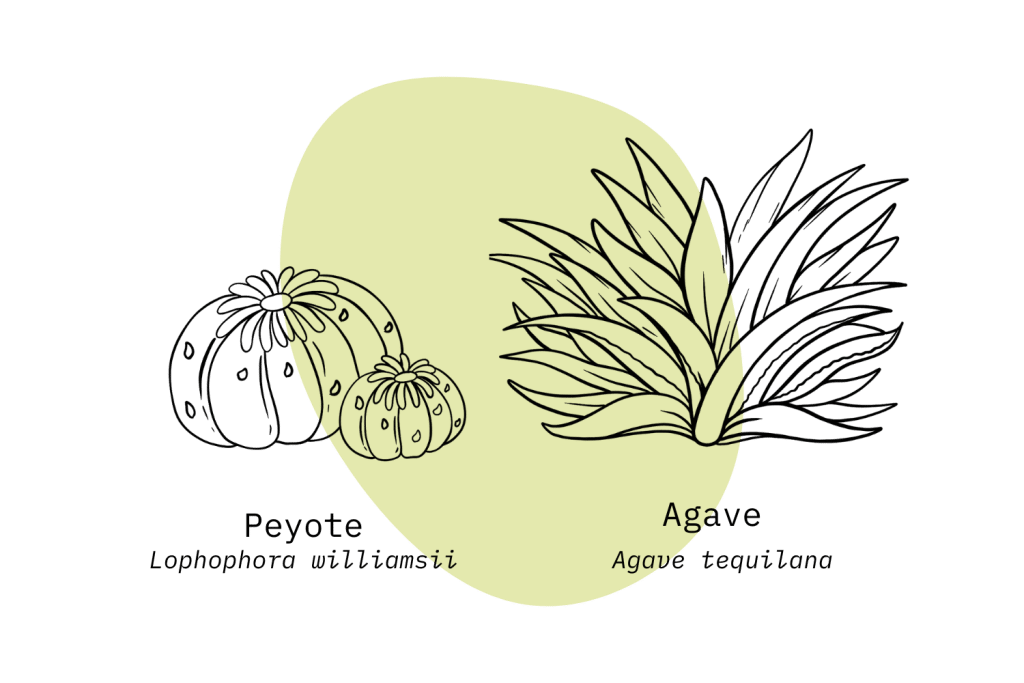
Mezcal is a distilled spirit made from the agave plant. It’s the same as tequila but can be made from any agave plant (tequila needs to be made from a specific type of agave called Agave tequilana or “blue agave”).
Mescaline is the active ingredient in psychoactive cacti (Lophophora williamsii) that have no relationship to the agave plant.
4. Why is Mescaline So Underrated as a Psychedelic?
Mescaline is not common among the general public, but those who have used it often return to mescaline after trying other psychedelics.
Let’s consider the stereotypical mescaline user — the old rebellious hippie. They’re usually pretty wise and have found some degree of success in both business and family life. They’re now enjoying their old age with plenty of travel and healthy social life.
They’ve done it all and have come full circle back to mescaline in their old age. The mescaline experience can be very insightful, but the primary underpinning of this compound is that it’s “grounding.” It brings you to the present moment and shows you just how much fun it is to be alive.
5. Is Huachuma the Same As San Pedro?
Yes, Huachuma is the local name for the San Pedro cactus (Echinopsis pachanoi) in Peru and other regions of the Andes mountains where it grows naturally.
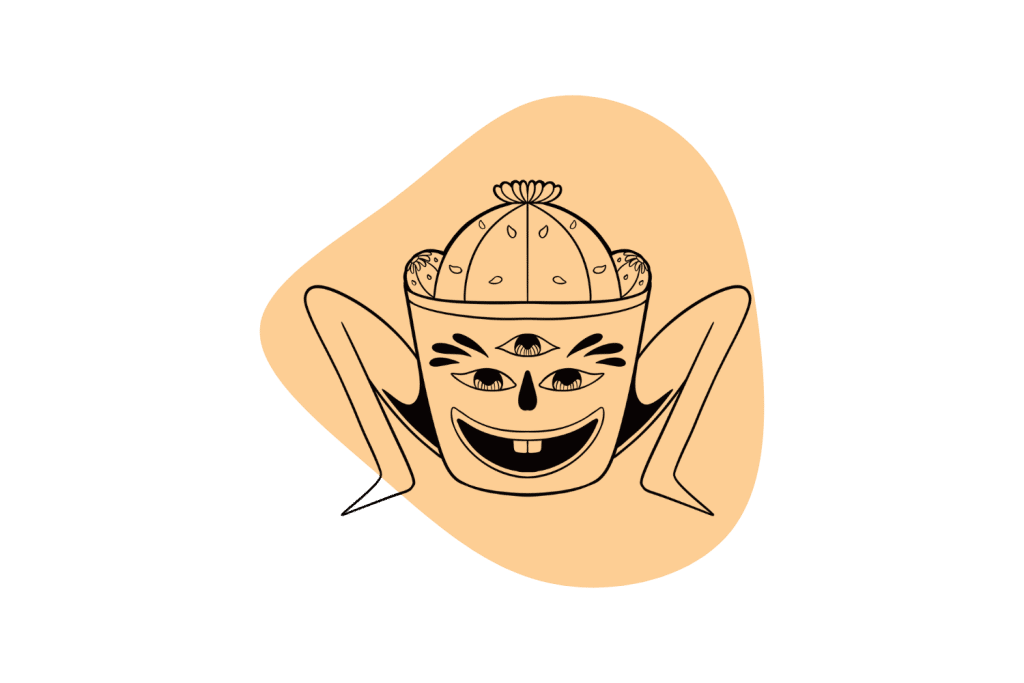
What Does the Future of Mescaline Look Like?
It’s likely the popularity of mescaline will continue to increase over the coming years behind DMT, LSD, and magic mushrooms. As the use of psychedelics becomes less taboo, people will undoubtedly start to explore some of the more “unconventional” psychedelics (if you can even call mescaline unconventional).
This underrated psychedelic will likely be limited in the marketplace, even as laws begin to loosen. Synthetic mescaline is available, but it will never be held in the same regard as raw psychoactive cacti — which is simply too expensive and difficult to produce to compete with LSD and magic mushrooms. Mescaline will always be more expensive and harder to find.
Subscribe To Get a Weekly Dose of Psychedelics In Your Inbox
References
- Carstairs, S. D., & Cantrell, F. L. (2010). Peyote and mescaline exposures: a 12-year review of a statewide poison center database. Clinical toxicology, 48(4), 350-353.
- Krebs, T. S., & Johansen, P. Ø. (2013). Psychedelics and mental health: a population study. PloS one, 8(8), e63972.
- Fickenscher, A., Novins, D. K., & Manson, S. M. (2006). Illicit peyote use among American Indian adolescents in substance abuse treatment: a preliminary investigation. Substance use & misuse, 41(8), 1139-1154.
- Winkelman, M. (2014). Psychedelics as medicines for substance abuse rehabilitation: evaluating treatments with LSD, Peyote, Ibogaine, and Ayahuasca. Current drug abuse reviews, 7(2), 101-116.
- Buckingham J (2014). “Mescaline.” Dictionary of Natural Products: 254–260.
- Dinis-Oliveira, R. J., Pereira, C. L., & da Silva, D. D. (2019). Pharmacokinetic and pharmacodynamic aspects of peyote and mescaline: clinical and forensic repercussions. Current molecular pharmacology, 12(3), 184-194.
- Kovacic, P., & Somanathan, R. (2009). Novel, unifying mechanism for mescaline in the central nervous system: electrochemistry, catechol redox metabolite, receptor, cell signaling, and structure-activity relationships. Oxidative medicine and cellular longevity, 2(4), 181-190.

